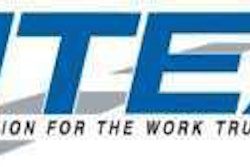Noel Perry, partner at FTR and senior economist for Truckstop.com, provided first insights about Irma this week at the 2017 FTR Transportation Conference.
Although it’s too early to collect any data from this second major hurricane in three weeks, due to FTR’s concentration on understanding Hurricane Harvey, Perry was able to provide an initial assessment, FTR says.
In looking at the two storms’ economic impact, FTR says together Florida and Texas represent about 15 percent of the U.S. economy. The storm interruptions of those two economic engines, fourth and second respectively among the states, will cost U.S. GDP about 0.5 percent in the third quarter of 2017. The two states account for about seven percent of U.S. trucking activity on a typical day and affect another four percent as important parts of truck trip circuits.
During his presentation Perry noted that like Hurricane Harvey, Irma is primarily a water event, even though the Florida Keys and southwestern Florida got some big winds. With Harvey the wet came from the skies, with Irma more of it is coming as storm surge from the ocean. That comes from the fact that Irma will affect more than twice the coast line touched by Harvey. In addition, Harvey was a smaller storm. Perry says that became a big deal when it stalled right over Houston, setting the contiguous U.S. record for sustained rainfall. Once it hit Florida, Irma speeded up its movement and will have died out in Indiana, a thousand miles from Key West in the time that Harvey squatted over Houston. That means Irma’s effects may be less catastrophic in any one place but will visit many more places. One other difference is that Houston is a major manufacturing town, with the chemical plants right down on the water. In Florida, it’s mainly consumer activity. So, the effects in Texas will be heavily tank truck and railcar related, while in Florida it will be dry vans full of consumer goods and flatbeds full of wall board, Perry says.
Using Harvey as a guide, FTR says this week will be a major down week for trucking in the Southeast, with volumes off perhaps 25 percent. Inbound to Florida, a headhaul in the best of time will probably demand a premium, with prices up 10 to 30 percent depending on the lane. Prices may fall outbound. Volume should get back to normal during the second week, at least inbound, then run modestly higher for six months or more, FTR says.
“We see from the Trans4Cast report (a partnership between Truckstop.com and FTR) that national market tightness jumped up sharply one week after Harvey and jumped some more the second week. Expect another couple of weeks of tightening from Harvey,” says Perry. “Throw in the Harvey-inspired fuel price hikes and you get 20+ percent jumps in average national spot market pricing. It doesn’t take long for such regional stress to show up in the national numbers. It is certain that Irma will occasion several more weekly jumps.”
Finally, FTR says a relatively strong freight economy and the pending electronic logging device (ELD) mandate means the freight transportation industry is approaching very murky, troubled waters. Such storms usually affect the large markets from three to six months. With the ELD mandate only three months out the industry could have troubled markets into the summer of 2018. This is clearly a time to be monitoring markets as closely as possible, FTR says.











